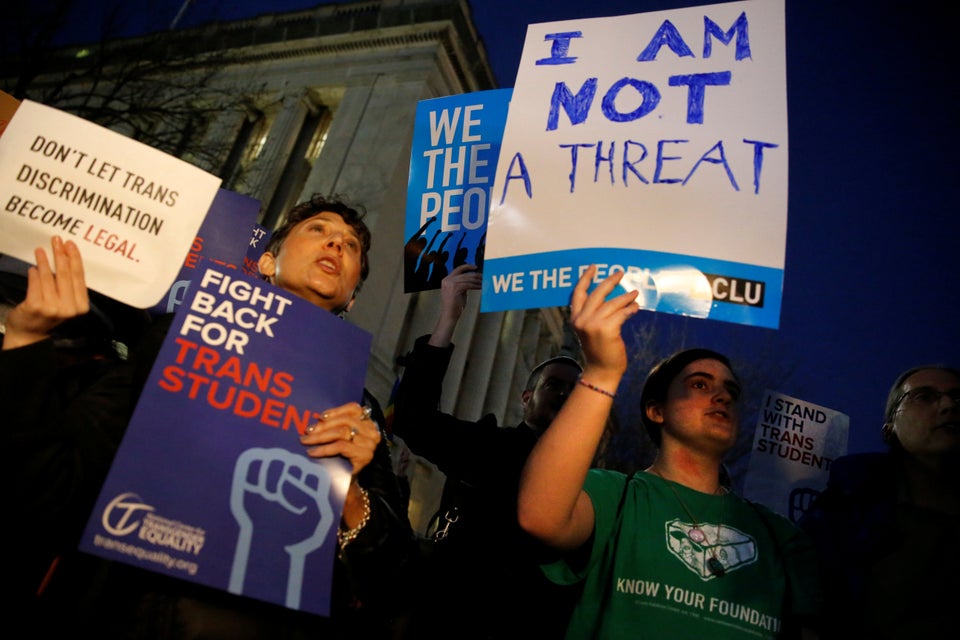John Kelly was sexually assaulted as a college sophomore in 2012.
Kelly ― who identifies with the pronouns “they,” “them” and “their,” and whose gender does not align with binary male-female gender lines ― told campus administration. Their assailant was subsequently suspended. But because Kelly and their assaulter had socialized in the same queer community at Tufts University, “people stopped talking to me, stopped acknowledging me,” Kelly told The Huffington Post in 2015.
Isolated, Kelly attempted suicide.
This incident from five years ago sheds some light on the unique experience LGBT students have when they are sexual assaulted ― crimes that typically don’t garner much news coverage.
“Although LGBT [people] disproportionately experience sexual assault victimization, their assaults are not highlighted in the media,” said Robert Coulter, a doctoral candidate at the University of Pittsburgh’s Graduate School of Public Health.
Where students attend college may make a difference in how likely it is that they’ll be harassed or otherwise victimized.
“Campus climates can actually impact at-risk groups,” said Coulter, who is the lead author of a study published this month in the Journal of Interpersonal Violence.
His research suggests that making college campuses more welcoming for LGBT people could help reduce sexual assaults of queer students. The study defined sexual assault as “intentional physical contact, such as sexual intercourse or touching, of a person’s intimate body parts by someone who did not have permission to make such contact.”
The study, which analyzed 2010 data from approximately 2,000 sexual- and gender-minority college undergraduates in all 50 states, found that there were fewer sexual assaults on LGBT students at schools that students perceived as being LGBT-friendly. (A caveat to consider: People who have been sexually assaulted could be more likely to consider their campus exclusionary or hostile.)
The research also found that students who witnessed harassment of sexual- or gender-minority people on campus were more likely to be the victims of sexual assault than those who did not witness harassment.
“We hypothesize that homophobic, bi-phobic and transphobic environments may put LGBT people at greater risk for sexual assault.”
- Robert Coulter
Queer people are more likely to the be victims of sexual violence than the general public ― for example, a 2015 University of Michigan survey found that LGBT students and students of color were twice as likely to experience sexual violence as their classmates ― but the effect of social environments on sexual victimization hasn’t been thoroughly studied.
“We hypothesize that homophobic, bi-phobic and transphobic environments may put LGBT people at greater risk for sexual assault,” Coulter said.
Building Campuses That Include Queer Students
If discriminatory and exclusive environments help create a culture of sexual assault, it stands to reason that an inclusive culture could be part of reversing that narrative.
Coulter put forth three hypotheses to explain why inclusive campuses are safer for LGBT students: potential perpetrators may be less likely to target queer students on an inclusive campus; bystanders might be more likely to intervene in the case of sexual assault; and LGBT students could be more empowered to protect themselves against sexual assault.
Resource centers and student groups for sexual- and gender-minority students, in addition to well-enforced anti-discrimination policies, are key elements of inclusive college campuses.
Training faculty, students and staff on sexual orientation and gender identity can also make campuses more welcoming for queer students, the study authors note. Current college sexual assault prevention programs typically don’t include LGBT intervention strategies or concerns ― which Coulter said is an “alarming” oversight, considering that sexual minority students are at a greater risk for sexual assault victimization.
He said he hopes his research can reduce the prevalence of sexual assault against gender minorities on college campuses.
“I hope that this brings attention to issues of policies regarding LGBT people on campuses, and I hope it makes people who are interested in sexual assault prevention and treatment more aware,” he said. “I hope to take my research more toward developing interventions for prevention and treatment of LGBT people and sexual assault.”
This reporting is brought to you by HuffPost’s health and science platform, The Scope. Like us on Facebook and Twitter and tell us your story: scopestories@huffingtonpost.com.
